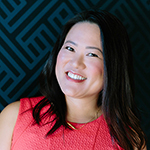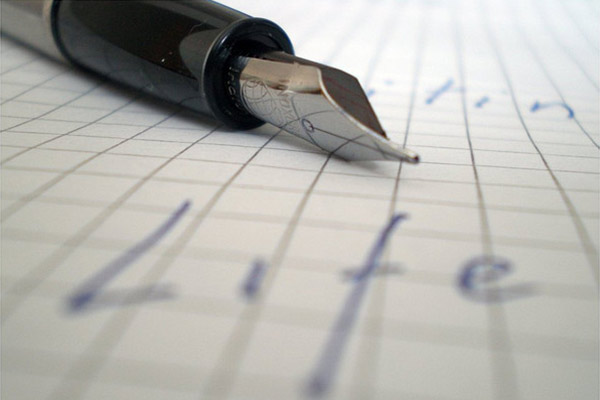When the freelance reporter from Asian Fortune contacted me last week to let me know the her article about Hapas had been published, I was a little concerned about the piece, but wanted to give them the benefit of the doubt. She and the staff person who reached out to me were very cordial, and I don’t think that they or the publication had ill-intentions. However, the story left me with more questions than it answered. Is being half-Asian a curse or a gift? HAPA stands for “Half Asian Pacific American”? Does it have to be framed in such a dichotomy? And what misconceptions could this cause for people who aren’t already immersed in discussions of mixed-race identity?
While I wanted to take a few days to mull over the article, the reaction from many other multiracials on social media indicates that I was not the only one who felt uncomfortable with the story. In fact, most many of the commenters expressed much stronger reactions than I did. You can read Sharon Chang’s roundup of these tweets on Multiracial Asian Families.
I think the best practice in a situation like this is to address concerns about an article directly with the writer or publication, and it’s taken me a few days to and consulting with knowledgeable people to draft a response. The following is my letter to the editor, which I’ve sent to Asian Fortune.
I was recently interviewed for Asian Fortune’s January cover story “Growing Up Half Asian American: Curse or Gift?” Thank you for your magazine’s interest in covering the mixed-race Asian Americans, a topic that is very complicated and includes a diversity of viewpoints and experiences, perhaps more than can be fully understood in one article.
Many multiracial Asians have spoken out on Twitter about problematic aspects of Tamara Treichel’s article. To give some more background, the term “hapa” is not commonly thought of as an acronym for Half Asian Pacific American. The word “hapa” comes from a Native Hawaiian term “hapa haole” which originated as a derogatory phrase towards mixed-race individuals. It is important to note that the term does carry some complex history, including objections from some Native Hawaiians over its use. The reference to Nazi Germany is probably an overly provocative comparison. Perhaps a more relevant historical context would be to explore the history of disenfranchisement multiracial individuals have faced in both Asia and the United States. There are books devoted to this history, such as “When Half is Whole” by Stephen Murphy Shigematsu or “War Baby/Love Child” curated by Wei Ming Dariotis and Laura Kina.
My responses to Tamara’s questions were aimed at explaining the racial and social context in which I am raising my family. Here is the most pertinent excerpt:
Silicon Valley, where we live, has a large Asian American population. There are some communites, such as Cupertino, which are majority Asian. However, much of the population is comprised of more recent immigrants or what’s called the “1.5 generation” – people who came to the United States as older children or young teens – and are much more versed in language and tradition.
My older son went to Chinese school for three years. Many of the kids in his class were already speaking Mandarin at home, so they already had basic conversation skills; they could then focus on increasing their vocabulary and learning characters. My son didn’t feel Chinese or Taiwanese enough to fit in with the other kids in his class.
One of the challenges of raising hapa kids, is that there is only one Asian parent to pass down the language and customs. As a second-generation Taiwanese American, I was born in the Midwest during the 1970s, when assimilation was emphasized as a means towards becoming accepted as truly American, so I have to make a conscious effort to incorporate my heritage into our family life.
Last spring, I spoke about mixed-race identity at a Taiwanese American women’s conference, some of the older women in their 50s and 60s said they hoped their multiracial grandchildren would pick up on Taiwanese culture by being around relatives and seeing how things are done in their families. I actually think parents and grandparents need to go beyond just hoping children will absorb culture by simply being around it. Kids are so influenced by what they’re surrounded by in the dominant culture; they will assume that the way things are done at school, on TV is the norm. Teaching them about different traditions needs to be an express message, even as simple as explaining what you’re doing while you’re doing things, such as, “In Taiwanese culture, it’s considered rude to open a present in front of the person who gave it to you. You should wait until you go home.”
Also, since many of the parents (like myself) of hapa children are monoracial, we can’t always draw upon our own childhood in raising our children, as they will find themselves in situations that we never experienced.
At the same time, my kids aren’t always viewed as white, either. One of my kids experienced racial teasing at school, with other children making slanty-eyed gestures at him.
As a journalist myself, I know it is not possible to publish an entire interview, but I do think the article missed an opportunity to discuss the very important issues of misunderstanding of mixed-race people, including from within Asian communities. My experiences may be unique to me, and other mixed-race individuals or parents of multiracial children may have different viewpoints. Again, the subject of mixed-race Asians is an important topic to cover, and if your publication decides to cover it in the future, I hope you will devote the resources necessary to thoroughly report on it.
Best regards,
Grace Hwang Lynch
***
What did you think of the Asian Fortune article?


The definition of hapa irked me, did they make it up or what? That definition of hapa excludes anyone who isn’t half/half (i.e. a giant mutt like me).
It also totally irked me that they saw fit to put it in all caps, even changing Kip Fulbeck’s “The Hapa Project” into “The HAPA Project” and “Part Asian, 100% Hapa” into “Part Asian, 100% HAPA.”
You don’t change the formatting of a published work, that’s bad writing. You shouldn’t change “One Hundred Years of Solitude” into “100yrs of Solitude” in formal writing.
And rants aside, yes, it was such a short article that tried to talk to way too many people to even delve into any issues. Very superficial in my opinion.
I agree! They spelled my blog HAPAMama, which I asked them to change… because like you said, it’s a title and a proper name. Thank you for chiming in!